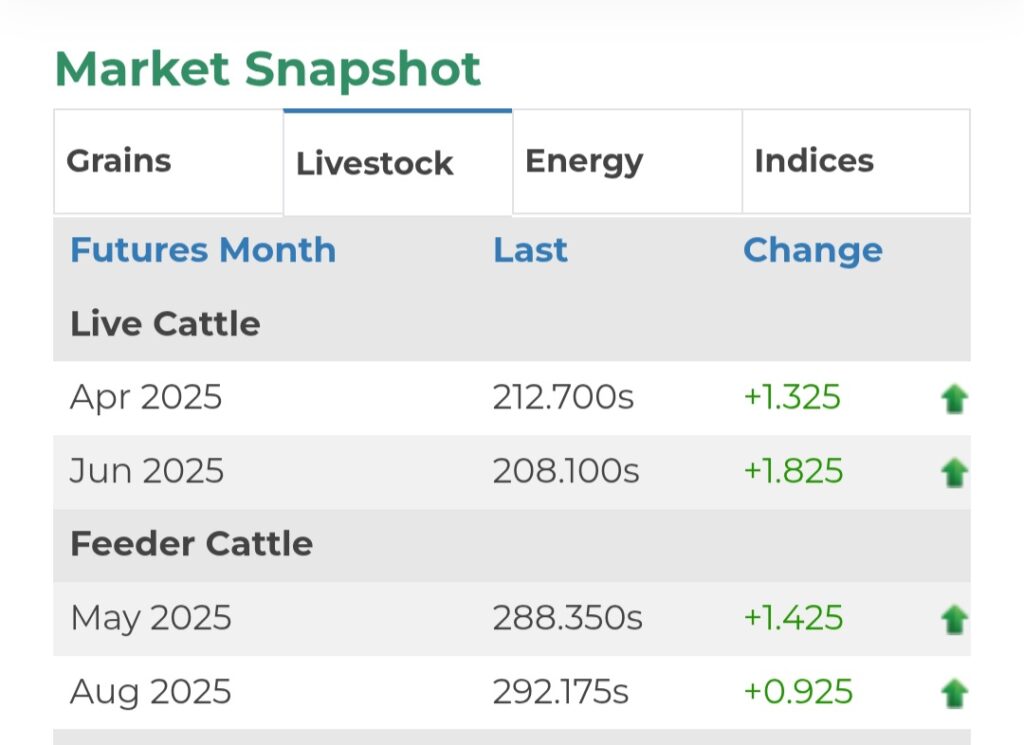
Domestic cattle prices have experienced a steady increase with futures setting new contract highs. While some are bearishly anticipating a double cap, long-term artificial suppression coupled with herd contractions and new leadership are far more likely to send commodities soaring across the board well into the future.
While some warn that this rebound will likely result in higher food prices at the grocery store, Beef Initiative Founder Texas Slim explains that this was always the inevitable outcome.
“The cost of living, really the cost of everything, has increased due to inflationary spending,” Slim said. “Government intervention is the only reason the cost of food hasn’t increased, but that’s resulted in unhealthy foods and a giant bubble that was going to burst eventually. That bubble was either going to burst after we lost the last farm in America, or elected new leadership willing to fight back. We got the latter,” Slim explains.
Despite the drastic market and supply chain shocks of Covid-19, liquidity deficits and artificial regulatory suppression have cooled domestic production over the last four years. While this managed decline worked well for global traders on Wall Street, Main Street America has been losing 47 family-owned farms per day while simultaneously losing the means of production.
With the Trump administration now tackling this degrowth head-on, ranchers are optimistic that this week’s rebounding commodity markets signal economic growth, and investment opportunities.
According to Cole Bolton, a banker and co-owner of K&C Cattle, current market conditions are providing much needed liquidity, and new entry points for the next generation that just haven’t existed in recent years.
“With the current market conditions, I believe there is a real opportunity for new and young ranchers to capture liquidity over the next 2-3 years,” Bolton said.
“Now is the time to maximize profitability by making a long-term plan for your operation. While the fat and feeder boards may fall some, the advantage is in the hands of the cow/calf producers until herd sizes are stabilized again,” Bolton added.
In order to hedge against inflation, some are also looking to cattle as a store of value, similar to gold or bitcoin. Shanen Ebersole of Ebersole Cattle has pioneered a herd-share program that’s helping investors receive a tasty return on investment.
“The cattle industry in America is at a huge crossroads right now. We have the lowest [female] cow numbers in 73 years, and we’re losing farms at an astounding rate of 47 per day. The day that the last farm goes under, is the day Americans no longer have a choice and America no longer has control over the cost of food,” Ebersole said.
“However, American’s have a unique opportunity to invest now into a future of food freedom and security. By purchasing rancher-direct, Americans are investing directly into the domestic supply chain and through the Beef Initiative, we’ve made that investment opportunity available to all.”
According to Texas Slim, there’s never been a better time to buy a cow.
“We were never planning to go out quietly on a whimper,” Slim said. “Buying a cow isn’t just about rebuilding America’s herd size, it’s about taking a stand for the individual’s right to private property, prosperity and the pursuit of happiness. There’s never been a better time to buy a cow.”





0 Comments